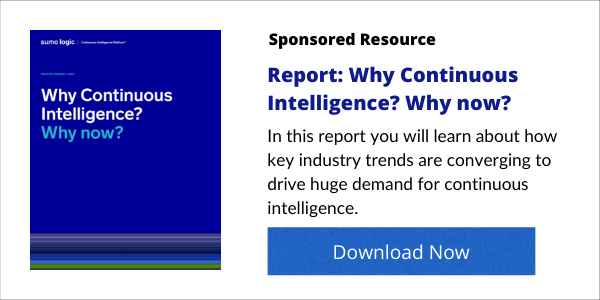
Cloud observability delivers data insights to keep a cloud application or service running and it offers a way to better understand entire cloud systems.
While observability is far from a new concept, cloud observability offers entirely new stakes. Companies grapple with complexity, scale, and security challenges as their systems architecture evolves. Still, cloud observability offers a path to navigate these challenges and more—but only if companies embrace it.
Download Infographic Now: The 5 intelligence gaps curbing your climb to digital successTraditional observability helps companies understand what’s going on in their systems. With the cloud, it’s more than simple logs and alerts. Observability here also means analyzing logs to find the underlying cause for the event and receiving actionable insight for how to proceed.
Cloud, multi-cloud, and hybrid-cloud environments are truly daunting places to attempt full-stack observability. With different containers, distributed systems, and third-party operators, companies might be tempted to put their resources elsewhere. However, achieving observability should be non-negotiable.
Observability is proactive and gives companies insight into potential weaknesses or failures before they cause a catastrophe. Manual monitoring won’t be enough to manage all these environments, so observability is necessary.
See also: Opening Your Cloud-Native Metrics With OpenMetrics and OpenTelemetry
Components of cloud observability
Organizations need to leverage three formats—event logs, metrics, and traces. Experts can aggregate these inputs with the help of machine learning to enhance observability.
- Event logs: A record of an event timestamped and written into an unmodifiable file.
- Metrics: Numerical representations of data over a period of time, rather than a single event
- Traces: Records of related events
Machine learning can analyze these components to create a transparent picture of what’s happening within the system. Over time, it learns to spot aberrations more quickly and offer solutions, creating a proactive response.
See also: Reliability is the Backbone of Digital Business
Goals of observability
Observability isn’t the end goal. Instead, observability offers teams the chance to better understand the entire system. Specifically, it offers help with:
Reliability: Razor-thin margins, the chance for disruptions, and increasing cybersecurity risks—all these can cause catastrophic downtime in addition to other consequences. With full-stack observability, companies mitigate these risks by ensuring the system performs as it should.
Security and compliance: Full observability offers a proactive take on security. As the system learns, it detects anomalies faster and recognizes more types of patterns to suggest an intrusion. It also provides a faster response time than manual monitoring.
Continuous improvement: Instead of a static set of records, observability offers a dynamic approach to making the system more efficient. Users can analyze the performance data and receive actionable insights for improving continuously.

Critical for cloud migration
The pandemic has accelerated many organizations’ cloud migration and digitalization efforts. Unfortunately, many cloud initiatives don’t deliver the anticipated results. A common problem is that applications underperform in the cloud to the extent they must be moved back on-premises.
And even successful cloud migrations are plagued by complexity, hidden interdependencies in intertwined applications, and an overall lack of visibility into the cloud environment.
These issues highlight the need for cloud observability.
When a cloud migration is carried out, it is not just a matter of monitoring or measuring the performance of a single cloud service. Typically, organizations have multi-cloud and hybrid cloud environments to manage.
Additionally, because of the multiple aspects of any cloud application or service, it is often hard to pinpoint the root cause of any cloud application performance degradation. It is still harder to know what needs adjustment to optimize cloud performance. When outages occur, organizations face similar problems. The complexity of the cloud environment normally masks the source of the problem.
See also: What is Continuous Intelligence?
Eliminating blind spots with cloud observability
Companies can identify cloud application issues more efficiently by committing to observability. Pattern detection with machine learning offers an automated, intelligent way to monitor performance across multi-cloud and hybrid cloud systems. Companies will gather meaningful information about their system no matter what the stack looks like and can make decisions to ensure the healthiest system possible.
To accomplish this, what’s needed is an observability solution that delivers data insights to keep a cloud application or service running. Any such solution must include multi-cloud monitoring and application observability, as well as high scalability.
Download Infographic Now: The 5 intelligence gaps curbing your climb to digital success





